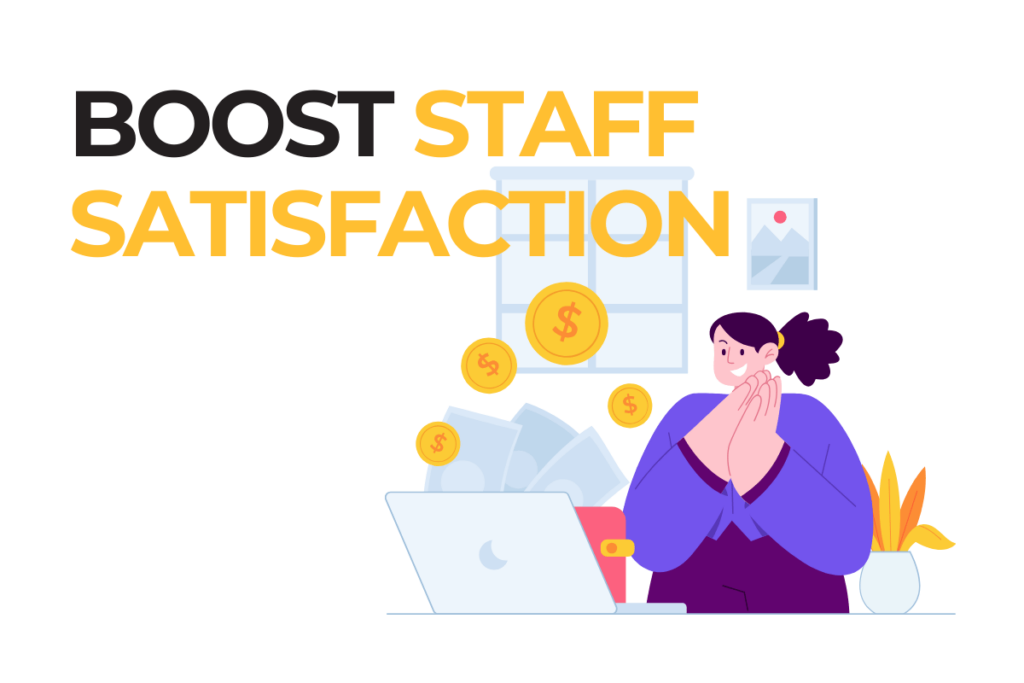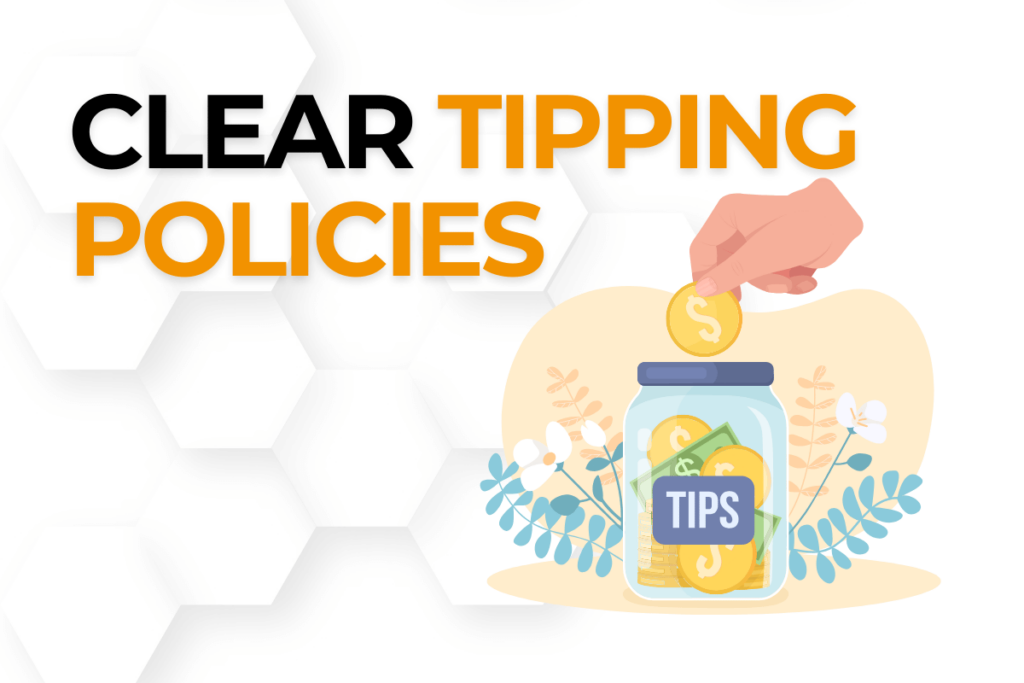The Tipping Dilemma in Massage Therapy: How to Solve It
Imagine this: A client finishes their massage, approaches the front desk to pay, and then pauses. They’re unsure if they should tip, how much to tip, or whether tipping is even expected. This awkward moment creates tension, leaving both the client and staff uncertain. According to industry data, over 50% of clients are unsure about tipping etiquette in health services like massage therapy.
For massage therapy clinic owners, this scenario is all too common. The lack of clear tipping guidelines can result in client discomfort, inconsistent staff compensation, and confusion about pricing. This article will guide you through the challenges of tipping in your clinic and offer actionable solutions to eliminate confusion, ensuring a smoother experience for clients and therapists alike.
Why Clear Tipping Guidelines Matter for Your Clinic
Consistency Creates Confidence
Clear and consistent tipping practices remove uncertainty for clients and staff. Clients who understand the tipping guidelines are less likely to feel awkward when it comes time to pay, leading to a better overall experience. For staff, consistent tipping leads to greater job satisfaction and stability. Inconsistent or unclear policies can cause friction between staff and clients, leaving therapists feeling undervalued or unsure of what to expect.
The Link Between Tipping and Therapist Retention
Your massage therapists are the backbone of your clinic. If they feel undervalued or unsure about their income, retention can become an issue. Tips often make up a significant part of therapists’ earnings, and uncertainty around tipping can lead to dissatisfaction, performance issues, or even staff turnover. By implementing clear tipping policies, you help create a stable and predictable income for your therapists, improving retention and job satisfaction.
Common Challenges Massage Clinics Face with Tipping
1. Client Uncertainty
One of the most frequent issues clients face is understanding whether tipping is expected in a professional health service environment like massage therapy. Some clients may assume tipping isn’t necessary in a clinical setting, while others are unsure of how much to tip. This creates discomfort for both the client and therapist, leading to an overall negative experience.
2. Therapist Compensation
Massage therapists often rely on tips as a significant part of their income, and inconsistencies in tipping practices can lead to pay disparities. If clients don’t tip consistently or are unsure about tipping etiquette, therapists may feel undervalued and dissatisfied with their earnings.
3. Confusion Around Pricing Structures
If clients are unsure about tipping or if they feel tipping is expected on top of a high service fee, it can lead to frustration. Clients want clarity on what they are paying for and whether additional tipping is necessary, especially in clinics that charge premium rates for services.

Crafting a Transparent Tipping Policy for Your Clinic
How to Communicate Tipping Policies Effectively
Creating a clear tipping policy is essential for your clinic’s success. Here are actionable steps to ensure your tipping policies are well communicated and understood:
- Include Tipping Guidelines on Your Website: Dedicate a section of your website to clearly explain the tipping policy. Mention whether tips are expected or appreciated and what percentage is customary.
- Discuss Tipping During the Booking Process: Provide clients with information about tipping when they book their appointments online or over the phone. This prepares them ahead of time and eliminates uncertainty.
- Use Visible Signage in Your Clinic: Place signs at the reception or checkout area that politely explain the tipping guidelines. Consider using phrases like, “Tips are appreciated but never expected,” to set the tone.
Be Transparent About Therapist Compensation
Explain how tips contribute to the overall compensation for therapists and how it benefits both clients and staff. Transparency fosters trust and creates a professional environment where both clients and therapists feel respected.
Consider offering an all-inclusive service fee that eliminates the need for tipping altogether. This simplifies the payment process for clients and ensures therapists are fairly compensated without relying on tips.
Alternatives to Tipping: Should You Consider a No-Tip Policy?
Some clinics are moving toward a no-tip policy, where the service fee is all-inclusive, and tipping is no longer expected. This approach has its pros and cons.
The Pros of a No-Tip Policy
- Predictable Pricing: Clients know exactly what they’re paying upfront, reducing confusion and awkwardness.
- Consistent Therapist Pay: Therapists receive steady compensation without relying on tips.
- Enhanced Professionalism: A no-tipping policy can elevate the perceived professionalism of your clinic.
The Cons of a No-Tip Policy
- Higher Upfront Costs for Clients: Clients may view all-inclusive pricing as more expensive, especially if they’re used to deciding whether to tip.
- Industry Norms: Tipping is still a widespread practice in the massage industry, and eliminating it could feel unfamiliar to some clients.
Educating Your Clients About Tipping Etiquette
How to Educate Clients on Tipping Without Awkwardness
Tipping etiquette can be confusing for clients, but educating them doesn’t have to be awkward. Here’s how to make it simple:
- Create a Tipping Etiquette Guide: Develop a guide explaining your clinic’s tipping policies. You can provide this online, via email, or as a physical brochure at your clinic.
- Use Friendly, Professional Language: When explaining tipping policies, use language that puts clients at ease, like “Our therapists appreciate your gratuities but tips are never required.”
- Offer Multiple Payment Options: Make tipping easier by offering credit card, cash, and digital payment options, so clients can tip in whichever way they feel most comfortable.
Sample Call to Action:
Download our “Tipping Etiquette Guide” and share it with your clients to ensure a smoother experience at your clinic.
How to Train Your Staff on Tipping Conversations
Empowering Your Staff to Discuss Tipping Professionally
It’s essential to train your staff on how to discuss tipping in a way that feels natural and professional. Role-playing conversations around tipping can help staff feel more comfortable, while also ensuring they are delivering consistent messaging to clients.
- Use Scripts: Provide your staff with a basic script they can use if clients ask about tipping. For example, “Tipping is never required but greatly appreciated by our therapists.”
- Encourage Focus on Service Quality: Remind therapists that the best way to earn tips is by providing excellent service. This ensures that clients feel inclined to tip based on the quality of care they receive.

Measuring the Impact of Your Tipping Policies on Business Success
Tracking Success Metrics
To determine the effectiveness of your tipping policy, track key metrics:
- Client Satisfaction: Use client feedback surveys to gauge how clients feel about your tipping policies.
- Staff Retention: Monitor staff turnover rates. Clear tipping policies that improve therapist compensation can help retain staff.
- Revenue Growth: Track revenue changes before and after implementing a tipping policy to see if it impacts overall business performance.
Success Story:
After implementing a clear tipping policy, one massage therapy clinic saw a 20% increase in client satisfaction and improved staff retention over six months.
Solving the Tipping Dilemma for Lasting Business Growth
Addressing the tipping dilemma with clear, consistent policies is more than just solving an immediate pain point—it’s about fostering long-term trust and building a foundation for sustainable growth. When your clients know exactly what to expect, their experience becomes smoother, more professional, and free from unnecessary stress. Clear policies empower your staff, leading to higher morale and better service, which in turn increases client retention and loyalty.
Educating your clients about your tipping policy, whether it’s traditional or a no-tip, all-inclusive model, sets the stage for a transparent relationship. Transparency ensures that clients feel valued and respected, while also creating a culture where your therapists are appreciated and rewarded for their work. Additionally, strong communication around these policies can enhance your clinic’s reputation, making it a go-to destination for both clients seeking clarity and therapists looking for a stable and supportive workplace.
Ultimately, tackling the tipping dilemma isn’t just about smoothing out a common operational challenge—it’s about creating a seamless, trusted experience that drives repeat business, improves therapist retention, and sets your clinic apart as a leader in professionalism and client care. By continuously refining and communicating your policies, you position your clinic for both immediate improvements and lasting success.
FAQs: Tipping in Massage Therapy
The standard tipping rate for massage therapy is typically 15-20% of the total service cost, but this can vary based on regional norms or clinic policies.
A no-tipping policy simplifies pricing and removes uncertainty for clients, but it may feel unfamiliar in regions where tipping is customary. Consider the pros and cons before making a decision.
Communicate tipping expectations in a friendly and professional manner, using signage, email confirmations, and verbal communication. Always use language that emphasizes tips are appreciated but not required.
If you move to a no-tipping model, you should adjust service fees to ensure therapists are compensated fairly. This can create a stable income for therapists and reduce reliance on variable tips.


